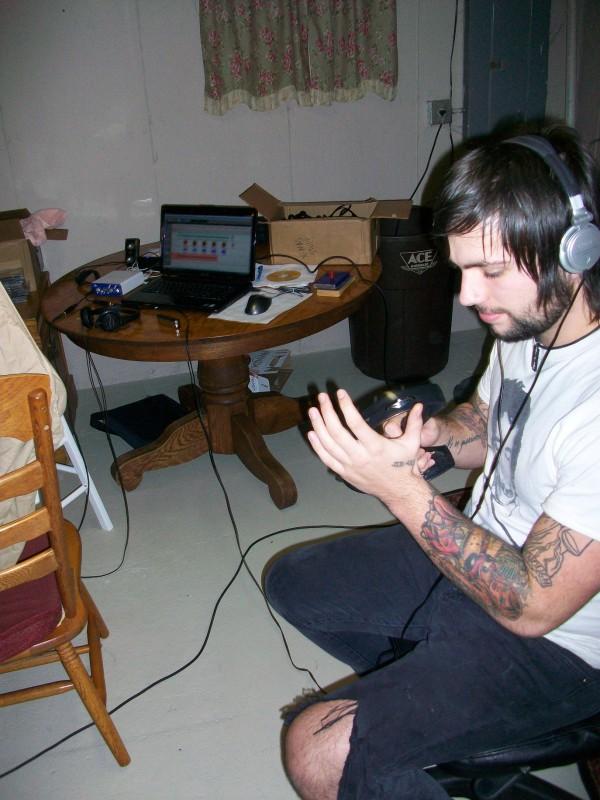To start, the simple imposing of my mouth inside of the guitar hole in the image titled “Nobody’s Listenin” is another expression of the concept I touched on in my performance piece. The idea that music is never heard the way in which the artist actually intends it to be perceived, because music is partly left open to interpretation. Furthermore, it makes the creator also feel trapped in a world where he will never truly be able to communicate his ideas.
The work titled “We Want You” actually reflects on a more classically ‘punk’ ideology towards consumerism, advertising and subliminal messaging in what I hoped to be a very surreal and subjective way. In contrast to mostly angry ‘punk’ attitude, this image shows a bluer take on the matter. Ironically enough I wanted it to be left open to the viewers own interpretation, but for me the gun represents the violence, competition and aggression that is embedded in capitalism that we can’t always clearly see. Television is simply a portal and a compression to that world in which we are constantly bombarded with clever adverts. The situation seems endless and hopeless.
It is common for classic blues musicians to personify the blues in such a way that they would seem to have discussions with ‘it’ as if it were a person sitting next to them. This is exactly what I wanted to show in the work called “How Have You Been?” It’s pretty self explanatory, but to add I will say that it references that blues ‘figure’ or version of yourself reappearing or constantly being in your presence and attempting to see it for what it really is. Again, words can only explain this feeling to a certain extent, the rest is up to the viewer.
Finally, what I feel as the most important image is the triptych named “Crucifix Blues.” For me, these images discuss the most deep rooted seed for all my ‘blues’ and anxiety. Simply put, the work is about being agnostic and the anxiety it causes one who is continuously surround by hallmarks and reminders of the Christian ideology or other faiths for that matter. An almost ever-present forces to keep the agnostic aware of his fate to be forever wondering while so many seem (or pretend) to be so sure of an afterlife. I would definitely intend this work to be viewed in conjunction with the listening of my song, which can be heard at www.myspace.com/ryandusthimer.
As far as relating my work to a reading, all I can do is iterate the utmost significance of these artistic expressions to me and openly applaud and support Roelstraete’s words: “today we continue to live and work, to labor and love, under the ageis of one tenacious assumption- that art simply is the most important thing, and that if a thing is named art, it is thereby made the most important thing, possibly even the only thing.”
Bibliography
Roelstraete, Dieter. "What is Not Contemporary Art?: The View from Jena". e-flux. March 29 2010

No comments:
Post a Comment